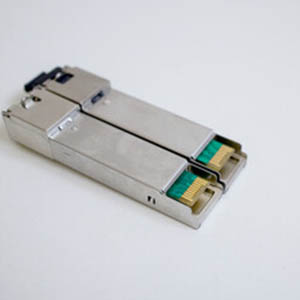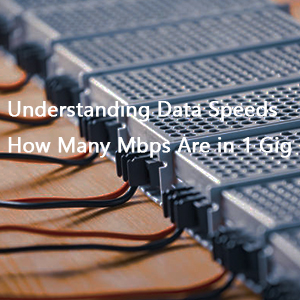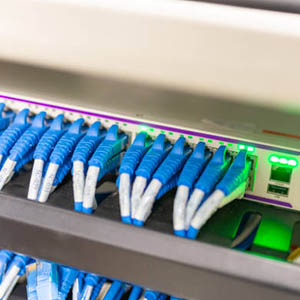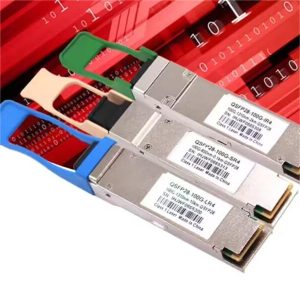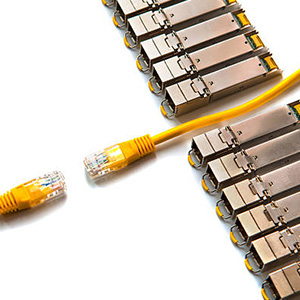As the demand for high-speed data transmission in networks increases, 10G modules have become a popular choice, especially for data centers and enterprises requiring robust connectivity solutions. These modules, including variations such as 10G DWDM SFP+ and 10G SFP+, offer both versatility and high performance. Let’s delve into what makes 10G modules so valuable, how to identify them, and best practices for their usage.
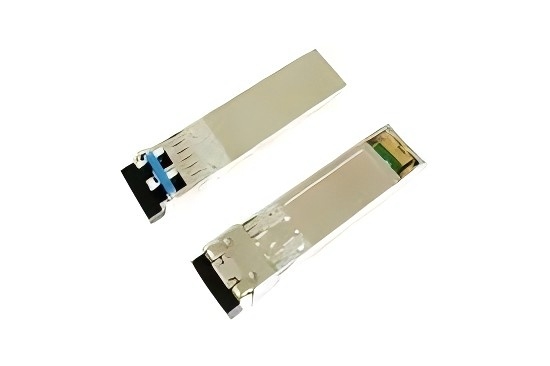
What Are 10G Modules?
10G modules are transceivers that support data transmission at speeds of up to 10 Gbps across various network environments. Typically used in large-scale networks where speed and reliability are critical, such as in data centers, telecommunications, and enterprise networks. Their compact design and versatility make them ideal for a range of applications, whether transmitting over long distances or handling large volumes of data traffic.
Types of 10G Modules: DWDM SFP+ and SFP+
The two commonly used types of 10G modules are 10G DWDM SFP+ and 10G SFP+. Understanding their unique characteristics can assist you in choosing the best fit for your network needs.
10G DWDM SFP+: Designed for Dense Wavelength Division Multiplexing (DWDM) networks, this module allows multiple data signals to be transmitted over a single fiber strand. This capability is invaluable in scenarios where fiber is limited, as it maximizes bandwidth without requiring additional fiber. DWDM SFP+ modules are well-suited for long-distance data transmission across metro and regional networks, and their wavelength-specific design enables seamless integration into existing DWDM systems.
10G SFP+: The 10G SFP+ module is a more general-purpose module used for high-speed networking within shorter distances. It is widely compatible with standard 10G Ethernet networks, making it an efficient choice for intra-data center connectivity and linking networking equipment like routers and switches. SFP+ modules offer cost-effective solutions for enterprises aiming to upgrade to 10G speeds without extensive infrastructure modifications.
Key Benefits of 10G Modules
Both 10G DWDM SFP+ and 10G SFP+ modules offer several advantages that enhance network performance and flexibility:
- Scalability: 10G modules allow seamless scaling of network capacity without massive upgrades.
- Cost Efficiency: By enabling multiple signals over a single fiber strand (DWDM SFP+), these modules reduce the need for additional fiber installations.
- Versatility and Compatibility: Compatible with a wide range of network devices, 10G modules offer flexible installation options to suit various network layouts and bandwidth needs.
How to Identify the Right 10G Module
When selecting a 10G module, consider the following key aspects to ensure it meets your network’s requirements:
- Transmission Distance: Opt for a DWDM SFP+ module for longer distances (up to 80 km) and a standard SFP+ module for shorter-range connections (within 300 meters for multimode or up to 10 km for single-mode).
- Wavelength Requirements: DWDM SFP+ modules operate on specific wavelengths. Verify your existing DWDM network’s wavelength range to ensure compatibility.
- Network Compatibility: Ensure the 10G module is compatible with the devices in your network. Most switches, routers, and network cards support 10G SFP+ slots, but compatibility with DWDM wavelengths requires verification.
- Form Factor: The SFP+ form factor is widely used, but always check device compatibility to avoid connection issues.
Tips for Using 10G Modules Efficiently
To maximize the performance and longevity of 10G modules, follow these usage tips:
- Proper Handling: 10G modules are delicate and require careful handling. Avoid touching the fiber optic surface and store modules in protective caps when not in use.
- Regular Maintenance: Clean the fiber connectors periodically to prevent signal loss caused by dust or debris. Visual fault locators can help detect and troubleshoot connection issues.
- Correct Installation: Insert modules securely into the ports, applying even pressure to avoid misalignment that could impact signal quality.
- Environmental Control: Maintain optimal environmental conditions, as excessive temperature or humidity can degrade the module’s performance. Ensure the network room is well-ventilated and temperature-controlled.
Practical Application of 10G Modules
10G modules play an important role in various network applications. Here are some examples of how they can be effectively deployed:
- Data Center: Used to connect servers and switch racks to achieve high-speed data exchange within the data center.
- Telecom Network: DWDM SFP+ modules help expand telecommunication infrastructure by enabling long-distance data transmission over existing fiber networks.
- Enterprise Network: SFP+ modules provide cost-effective 10G connectivity for enterprise networks, supporting applications that require high data throughput, such as video streaming and cloud computing.
Conclusion
10G modules, including DWDM SFP+ and SFP+ variants, are key components of any network that requires powerful, high-speed connectivity. By understanding their specific features, applications, and installation practices, you can make informed decisions to enhance network performance and scalability. Whether it is long-distance transmission in telecommunications or high-speed data processing in data centers, 10G modules provide adaptable and powerful solutions for modern network needs.

